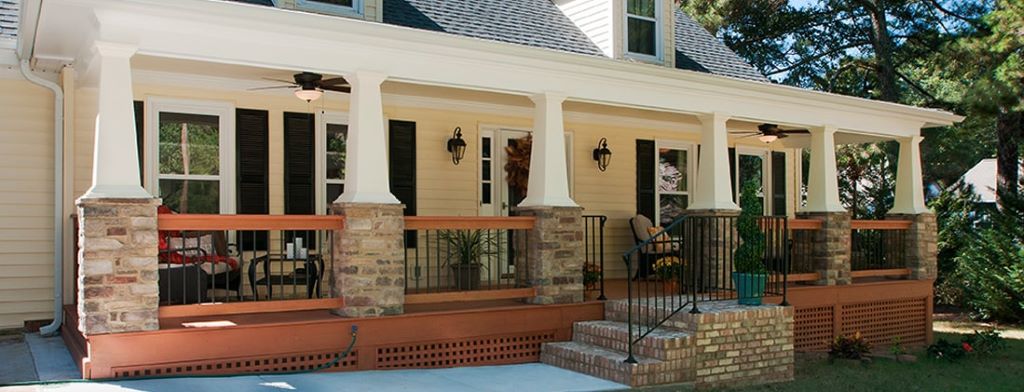
The Craftsman style, known for its emphasis on natural materials, simple lines, and handcrafted details, remains a popular choice for homeowners seeking timeless elegance. If you’re looking to add or update a porch railing to complement your Craftsman home, careful planning is key. This guide will walk you through the essential steps, from understanding the style’s unique characteristics to choosing materials, ensuring safety, and obtaining necessary permits.
Understanding Craftsman Style Railing
Craftsman-style railings typically feature:
- Wood as the primary material: Woods like cedar, redwood, or cypress are favored for their durability and natural beauty.
- Simple, clean lines: Avoid overly ornate designs. Straight lines, gentle curves, and simple geometric shapes are characteristic of the style.
- Exposed joinery: Mortise and tenon or dovetail joints showcase craftsmanship and add visual interest.
- Strong horizontal emphasis: Wide rails and balusters spaced at regular intervals create a sense of stability and balance.
- Tapered or squared balusters: Balusters are often wider at the bottom and taper towards the top, or they maintain a consistent width for a more modern look.
- Open design: The space between balusters allows for airflow and views of the surroundings.
Planning Your Craftsman Porch Railing
- Safety First: Before delving into design, understand your local building codes. These regulations often dictate minimum railing heights (usually 36 inches), maximum spacing between balusters (typically 4 inches), and other safety requirements.
- Measure and Sketch: Carefully measure your porch area, noting any stairs or elevation changes. Sketch out your desired railing design, incorporating Craftsman elements that harmonize with your home’s architecture.
- Choose Your Materials: While wood is traditional, consider alternative materials like composite wood or metal for lower maintenance options. If using wood, research different species and their suitability for your climate. Cedar and redwood are naturally resistant to rot and insects.
- Decide on a Finish: Stains or paints can enhance the wood’s natural grain or provide a pop of color. Choose a finish that protects the wood from the elements while complementing your home’s exterior.
- Consider Lighting: Integrate porch lighting into your railing design. Lantern-style fixtures or sconces can enhance the Craftsman aesthetic and improve safety for evening use.
- Factor in Maintenance: Wooden railings require regular cleaning and periodic resealing to maintain their beauty and durability. Factor in the maintenance commitment when selecting materials and finishes.

Related: Is Travertine an Expensive Stone?
Design Tips for Craftsman Railings
- Battern Board: This horizontal board, often with decorative cutouts, rests atop the balusters and adds a distinctive Craftsman touch.
- Post Caps: Add visual interest to the top of your posts with decorative caps that complement the railing’s design.
- Varying Baluster Widths: For a unique look, consider alternating wider and narrower balusters.
- Integrated Planter Boxes: Build planter boxes into your railing design to showcase flowers or greenery.
Obtaining Permits and Professional Installation
Check with your local building department to determine if permits are required for your project. Depending on the complexity of your design and your DIY experience, consider hiring a professional carpenter or contractor to ensure a safe and code-compliant installation.
The 4 Best Mobile Apps For Home Planning and Interior Design
Maintenance and Care
To keep your Craftsman railing looking its best:
- Clean regularly with a mild soap and water solution.
- Inspect for any loose or damaged components.
- Reapply finishes as needed to protect the wood from the elements.
Conclusion
A well-designed Craftsman porch railing can transform your outdoor space into a welcoming haven. By understanding the style’s unique characteristics, planning carefully, and selecting appropriate materials, you can create a railing that enhances your home’s curb appeal for years to come.
Let me know if you’d like any sections expanded or have other questions!
